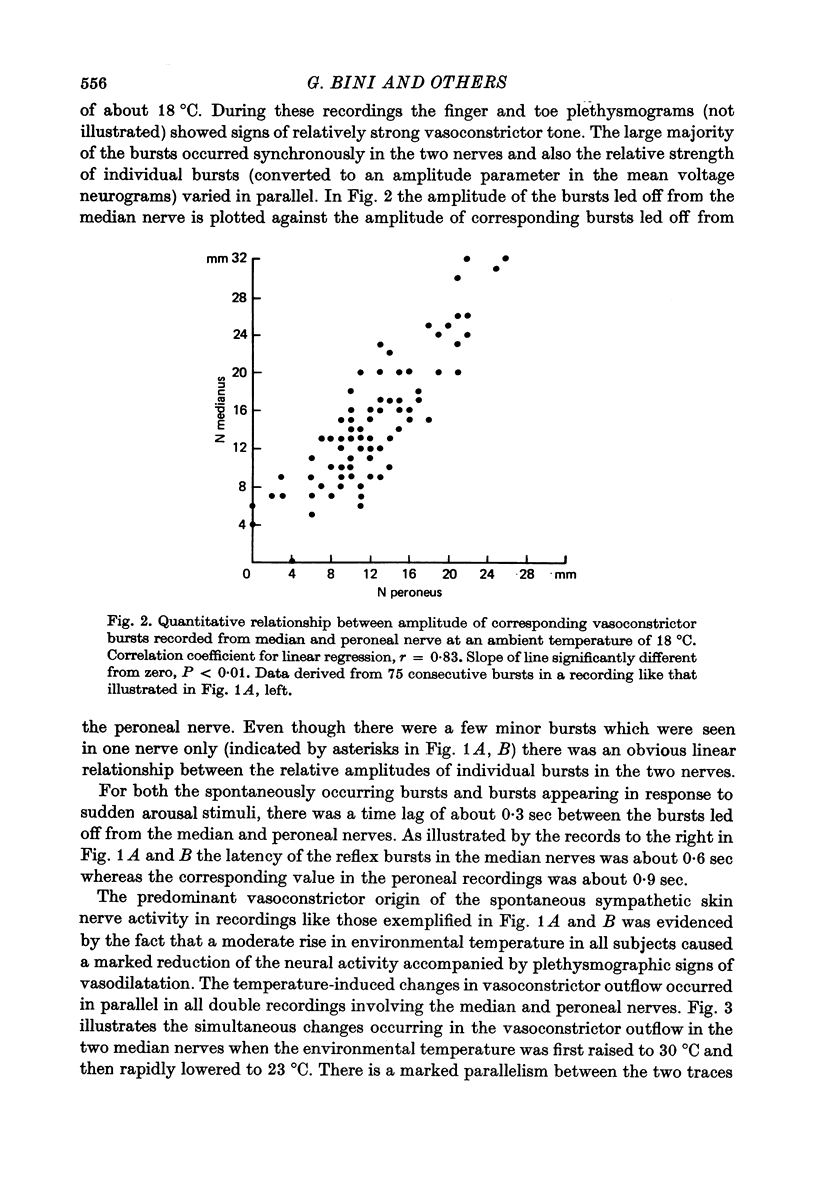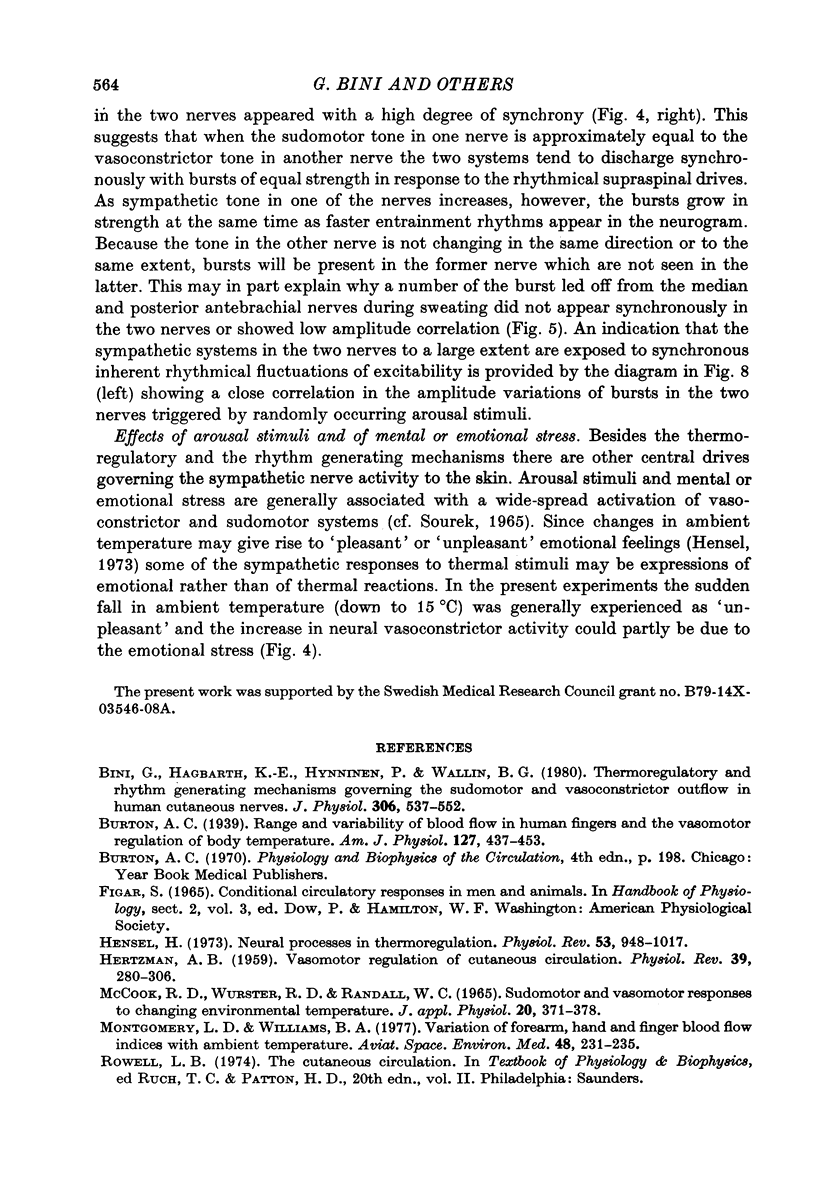Abstract
1. Skin nerve sympathetic activity was recorded simultaneously from the following pairs of nerves: left and right median, median and peroneal, left and right peroneal, posterior cutaneous antebrachial and superficial radial, posterior cutaneous antebrachial and median. The recordings were performed on healthy subjects exposed to different ambient temperatures. Electrodermal responses and pulse plethysmograms were recorded from the neural innervation zones. 2. Vasoconstriction impulse bursts recorded simultaneously from the median and peroneal nerves during exposure to a cold environment showed a striking similarity with respect to the timing and strength of individual bursts. A similar strong correlation was observed also among sudomotor bursts recorded simultaneously from the posterior cutaneous antebrachial and superficial radial nerve during exposure to a warm environment. 3. On some occasions, such as during exposure to a moderately warm environment or emotional stress, a temporal correlation was also observed between vasoconstrictor bursts recorded from the median and sudomotor bursts recorded simultaneously from the posterior cutaneous antebrachial nerve. 4. The double nerve recordings provided evidence that in the distal glabrous skin areas reflex thermoregulatory functions are mainly executed via vasoconstrictor fibres whereas sudomotor fibres are brought into action only at relatively high temperature. On the contrary, in the hairy skin on the dorsal side of forearm and hand reflex thermoregulation is to a large extent executed via sudomotor fibres.
Full text
PDF












Selected References
These references are in PubMed. This may not be the complete list of references from this article.
- Bini G., Hagbarth K. E., Hynninen P., Wallin B. G. Thermoregulatory and rhythm-generating mechanisms governing the sudomotor and vasoconstrictor outflow in human cutaneous nerves. J Physiol. 1980 Sep;306:537–552. doi: 10.1113/jphysiol.1980.sp013413. [DOI] [PMC free article] [PubMed] [Google Scholar]
- HERTZMAN A. B. Vasomotor regulation of cutaneous circulation. Physiol Rev. 1959 Apr;39(2):280–306. doi: 10.1152/physrev.1959.39.2.280. [DOI] [PubMed] [Google Scholar]
- McCook R. D., Wurster R. D., Randall W. C. Sudomotor and vasomotor responses to changing environmental temperature. J Appl Physiol. 1965 May;20(3):371–378. doi: 10.1152/jappl.1965.20.3.371. [DOI] [PubMed] [Google Scholar]
- Montgomery L. D., Williams B. A. Variation of forearm, hand, and finger blood flow indices with ambient temperature. Aviat Space Environ Med. 1977 Mar;48(3):231–235. [PubMed] [Google Scholar]
- Sundlöf G., Wallin B. G. The variability of muscle nerve sympathetic activity in resting recumbent man. J Physiol. 1977 Nov;272(2):383–397. doi: 10.1113/jphysiol.1977.sp012050. [DOI] [PMC free article] [PubMed] [Google Scholar]
- Wallin B. G., Delius W., Hagbarth K. E. Comparison of sympathetic nerve activity in normotensive and hypertensive subjects. Circ Res. 1973 Jul;33(1):9–21. doi: 10.1161/01.res.33.1.9. [DOI] [PubMed] [Google Scholar]


